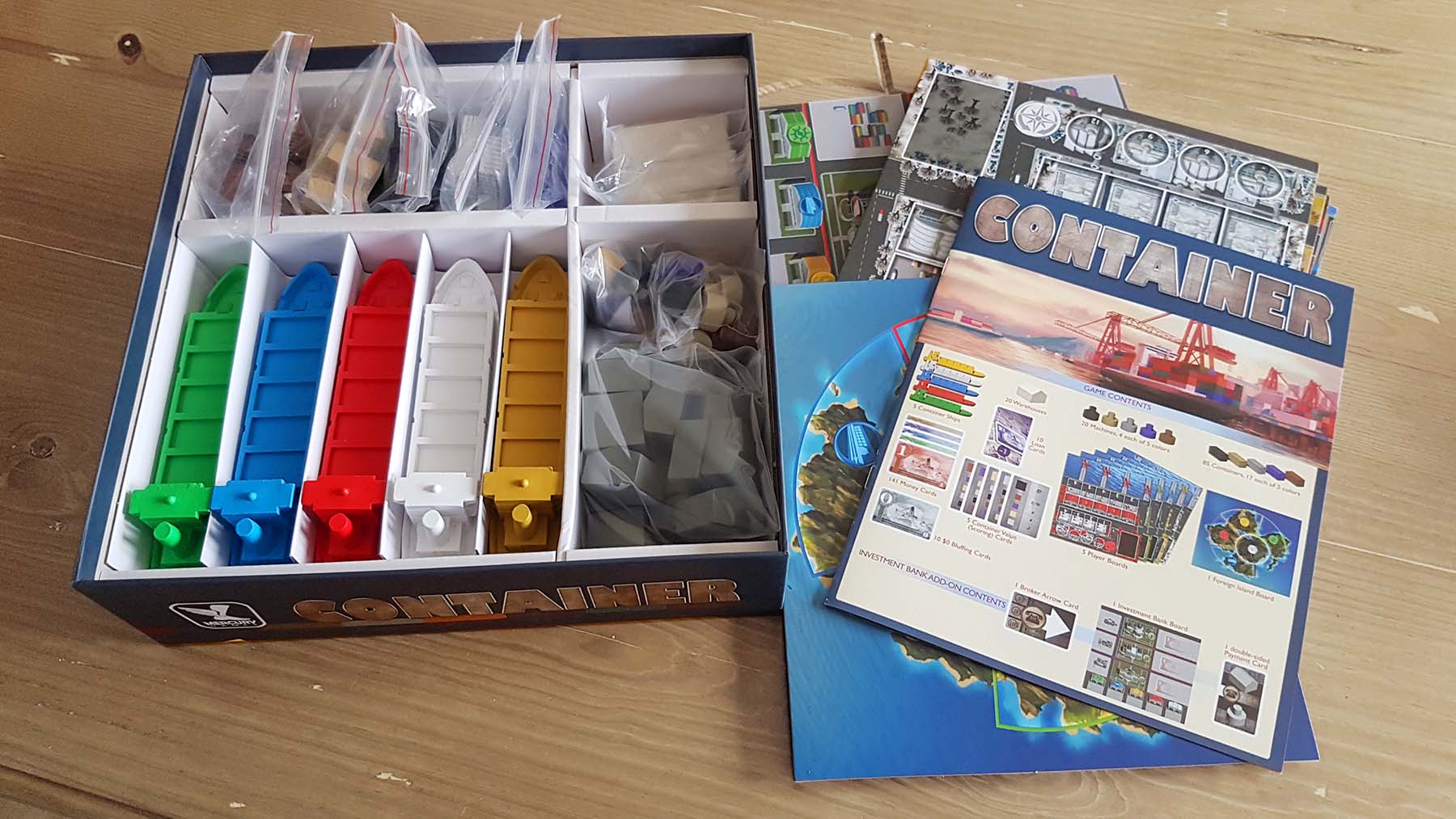
Looking for a quirky Christmas or birthday present?
Most people smile when we tell them about ‘Container’, the shipping container board game. They smile because they think we’re joking. Let me tell you now, Container is no joke. Its a fast moving, high stakes strategy game for up to five players. Ultimately the player with the most money at the end game is the winner. Its that simple. But its great fun, for all the family.

An exciting game that’s far from boring
Lets be completely honest here. A game based on a shipping container theme sounds a bit boring to most people. Boring couldn’t be further from the truth. Container is a fast moving high stake strategy game. Its suitable for all ages from 5 years upwards. You own ships, dockyards, shipping containers and currency and you move them around your world. The 2018 10th anniversary issue now includes an investment bank. It really does sound like a joke right, but seriously its not, and its great fun.
Container Gameplay
Container’s gameplay design boasts a captivating player-driven closed economy at its core. Unlike games like Monopoly, where money magically appears from an unknown source, Container sets a different tone. Here, the cash in players’ hands and the central bank at the beginning of the game represent the entire money supply. No additional funds will be injected into the game, making every financial decision crucial.

It begins in the ocean
Each player’s shipping container ship starts in the open sea. The first move involves a player to sailing their ship to another player’s dockyard. Each player is dealt a card at the beginning of the game, which shows the values of different types of containers ranging from 2 to 10. When docked they may purchase containers.
Avoid oversupply
If a player has the most or joint most of a certain type of container, it is considered oversupplied and worthless. This creates a situation where the player wants to have the most or joint most of their least valuable container. Additionally, having at least one of each type of container on the island benefits the player.

Auction time
Another action lets a player move their ship between the open sea and an island where a blind auction occurs among the players. The player triggering the auction can choose to sell the goods to the highest bidder. This provides them with a government subsidy. Alternatively they can buy the goods themselves at the highest bid. The difference in value is three times the highest bid. Are you following so far?
Sell your shipping container stock
To sell containers successfully, offer desired colours at competitive prices. Players have the freedom to strategise by undercutting rivals or charging premium for unique colours. This game revolves around player interaction. It resembles intense trading and haggling seen in games like Catan and Monopoly.
The winner of the game
The game ends when a player’s turn is over and there are no more containers of two types left. At this point, the containers on the island are evaluated. Containers remaining on players’ ships or dockside stores, but not in their factory stores, also hold value at the end of the game. The player with the most money at the end of the game wins.
Conclusion
In addition to its outstanding in-person gameplay, Container stands out among board games for its inventive gimmick. The game cleverly transforms the entire table into a sea, where players’ harbours and the island are considered open water. This simple trick expands the game beyond its cardboard pieces, creating a unique tabletop experience.
Further reading
https://en.wikipedia.org/wiki/Container_(board_game)
https://www.eurogamer.net/container-a-board-game-with-the-most-boring-theme-imaginable
https://www.board-game.co.uk/product/container-10th-anniversary-jumbo-edition/
https://boardgameprices.co.uk/item/show/21303/container-10th-anniversary-jumbo-edition





